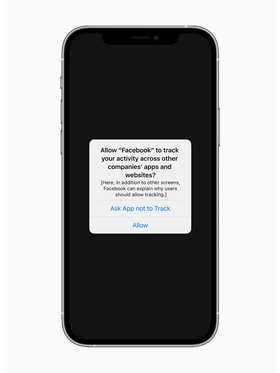In Times of Uncertainty, What Matters Most for Advertisers?
Here are some actions you can take to prepare for any situation: economic uncertainty, a global pandemic, or any other force out of your control.
Read More
Now that we're firmly in the new year, let's reflect on 2021 — our highs and lows, evolving trends, and the essential lessons learned that marketers should carry through 2022 and beyond.
That’s why we scoured Shopify Plus merchant communities and forums to round up the most common questions you had this year. You’re welcome.
According to the Baymard Institute, it’s approximately 70% across industries. For mobile, it’s a whopping 85%.
Although it’s undeniable that shoppers change their minds constantly, there are other factors that can lead to a high abandoned cart rate:
A lengthy checkout process
The lack of a guest checkout option
Limited payment options
An unresponsive mobile checkout page that requires pinching and scrolling
A slow mobile checkout loading time
Retargeting ads — whether in email or display ad form, retargeting is a hugely effective way to recover abandoned carts, especially if you include copy that drives urgency paired with an irresistible deal, such as a limited-time discount. (For a step-by-step guide to retargeting, check out this microblog.)
We recommend sending your first abandoned cart email approximately one hour after a shopper abandons their cart, then follow-up emails 24 and 72 hours later.
Abandoned carts will remain a problem in the ecommerce world, and the rates will only increase as shoppers’ attention spans become even more scattered.
Apple’s privacy and data sharing policy changes were a wake-up call for the industry — brands were forced to diversify their ad spend in various ways:
Using inbound marketing to attract new audiences
Investing more in retaining existing customers through loyalty programs (which is cheaper than seeking out new ones)
Experimenting with new channels like TikTok
Leveraging word-of-mouth marketing via influencers
The dreaded iOS 14.5 pop-up.
Consumer and data privacy will remain at the forefront of consumers’ and lawmakers’ minds. As a result, non-invasive tracking technology, such as urchin tracking modules (UTMs), will become more relevant than ever. (Need to brush up on UTM management? Make sure to check out this post.)
Build up your first-party data.
Develop better ad creative — consider more user-generated content (UGC).
Streamline your strategy and optimize your budget by launching fewer campaigns with smaller ad sets.
Widen your audience targeting.
Yes, due to Apple’s changes. If you saw less traffic and more expensive conversions this year, you’re not alone.
With more changes expected to third-party cookies and tracking, it’s time to diversify your marketing approach and analytics.Tools like AdRoll’s Cross-Channel Performance Dashboard provide a much more accurate view of your performance compared to Facebook’s native reporting.
TikTok is a unique platform with quirky humor — keep these tips in mind as you craft your ad:
Keep it short and sweet (under 20 seconds).
Set up your TikTok pixel so it integrates seamlessly with Shopify.
Create large target audiences — it’ll lower your cost per acquisition (CPA).
Check out this checklist for more fun TikTok ideas.
2021 was a fantastic year for TikTok.
If you’ve already launched your ads but are unsatisfied with the results, here are some strategies to try:
Build custom audiences and create lookalike audiences based on your existing customers.
Change up your creative — nobody wants ad fatigue.
Lose the age targeting.
Limit your placements to only TikTok, rather than BuzzVideo, News Republic, or other apps.
TikTok will grow in popularity, so if you haven’t hopped on the platform yet, now’s the time!
Choose your influencers wisely — don’t ignore the power of micro-influencers.
Use influencer content in your marketing efforts, including ads.
Rather than pay a flat fee, consider launching an affiliate program.
For more strategies, we compiled this quick guide!
Offer unique affiliate UTM codes (that can track the number of clicks and conversions) or personalized discount codes.
Decide on the terms — the revenue share structure, number of content pieces, and incentives (e.g., a financial bonus if products sell out within 24 hours).
Choose your influencer carefully — you need someone with a significant number of engaged followers.
Experiment before going all-out — consider first creating a special collection featuring the influencer’s favorite items to see if there’s enough interest and traffic.
Shoppers will continue to trust the word of their peers and influencers over marketers — if you haven’t gotten to this yet, develop a 2022 social proof and word-of-mouth strategy ASAP.
Armed with these answers and predictions, you’re one step closer to a year filled with marketing wins. Want to level up your Shopify store even more in 2022? Check out the AdRoll integration for Shopify and Shopify Plus brands.
Last updated on April 1st, 2022.

